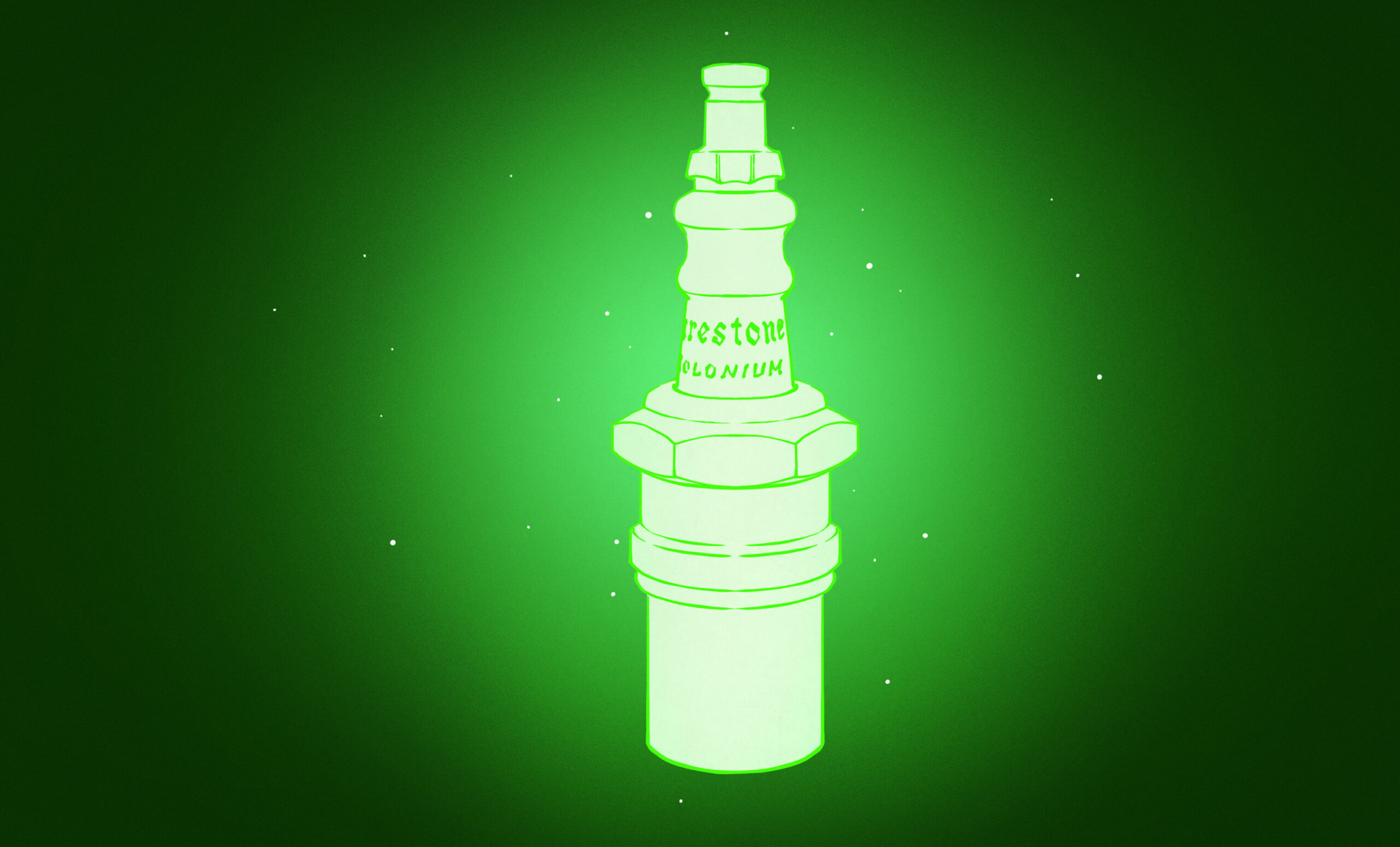In the mid-20th century, the Firestone Tire and Rubber Company introduced a line of spark plugs that incorporated the radioactive element polonium-210, a move that reflected the era’s fascination with nuclear technology. Marketed around 1940, these spark plugs were part of a broader trend that embraced the potential of radioactivity in everyday applications. Despite initial optimism, the spark plugs were short-lived, highlighting the complexities of integrating radioactive materials into consumer products.
The concept behind the Firestone polonium spark plug was grounded in the belief that the decay of polonium-210 could enhance engine performance. As the radioactive material decayed, it was expected to release alpha particles that would ionize the air-fuel mixture in the combustion chamber. This ionization could, in theory, create a more efficient spark, reducing the likelihood of misfires and improving overall combustion efficiency.
Firestone’s innovation was not without precedent. In 1924, inventor Albert Hubbard applied for a patent (US 1,723,422) that proposed using radium in spark plugs to achieve similar effects. However, Firestone opted for polonium-210, citing concerns over the cost and dangers associated with radium. The company secured its own patent (US 2,254,169) in 1941, which detailed the incorporation of polonium into the nickel alloy of the spark plug electrodes.
According to the patent, the alpha rays emitted by polonium would create a significant number of ions—approximately 10,000 ions per alpha ray. This would, in theory, facilitate a spark under challenging conditions, reducing the number of revolutions needed to start an engine, particularly in cold weather. Firestone claimed that tests indicated a 30% reduction in engine revolutions required for starting when using their polonium plugs compared to conventional alternatives.
Despite these claims, the practicality of radioactive spark plugs soon came into question. The half-life of polonium-210 is relatively short, lasting only 138 days. This means that after a year, approximately 84% of the initial polonium would have decayed, raising concerns about the effectiveness of the plugs by the time they reached consumers.
The last known advertisements for polonium spark plugs appeared around 1953, suggesting that their commercial viability was limited. While the theoretical benefits were intriguing, the actual performance of the plugs in real-world engines was likely diminished by the rapid decay of their radioactive component. Additionally, deposits on the electrodes over time could obstruct the alpha particles necessary for ionization, further limiting their efficacy.
The introduction of such products also raised significant safety and regulatory concerns. The complexities surrounding the storage, handling, and disposal of radioactive materials were considerable barriers that contributed to the decline of polonium spark plugs. The lack of widespread market acceptance may indicate that the risks outweighed the potential benefits.
Today, examples of the polonium-impregnated spark plugs can still be found online, often featured in auctions and collectibles. However, the radioactive material within these plugs has long since decayed, rendering them harmless in terms of radiation exposure.
The tale of Firestone’s radioactive spark plugs serves as a reminder of a time when the allure of nuclear innovation captivated industries and consumers alike. While the idea of enhancing automotive technology through radioactivity was ambitious, practical and safety concerns ultimately curtailed its application. The fascination with such innovations continues to intrigue historians and enthusiasts, as it highlights the intersection of science, engineering, and public perception during a transformative period in history.







































































